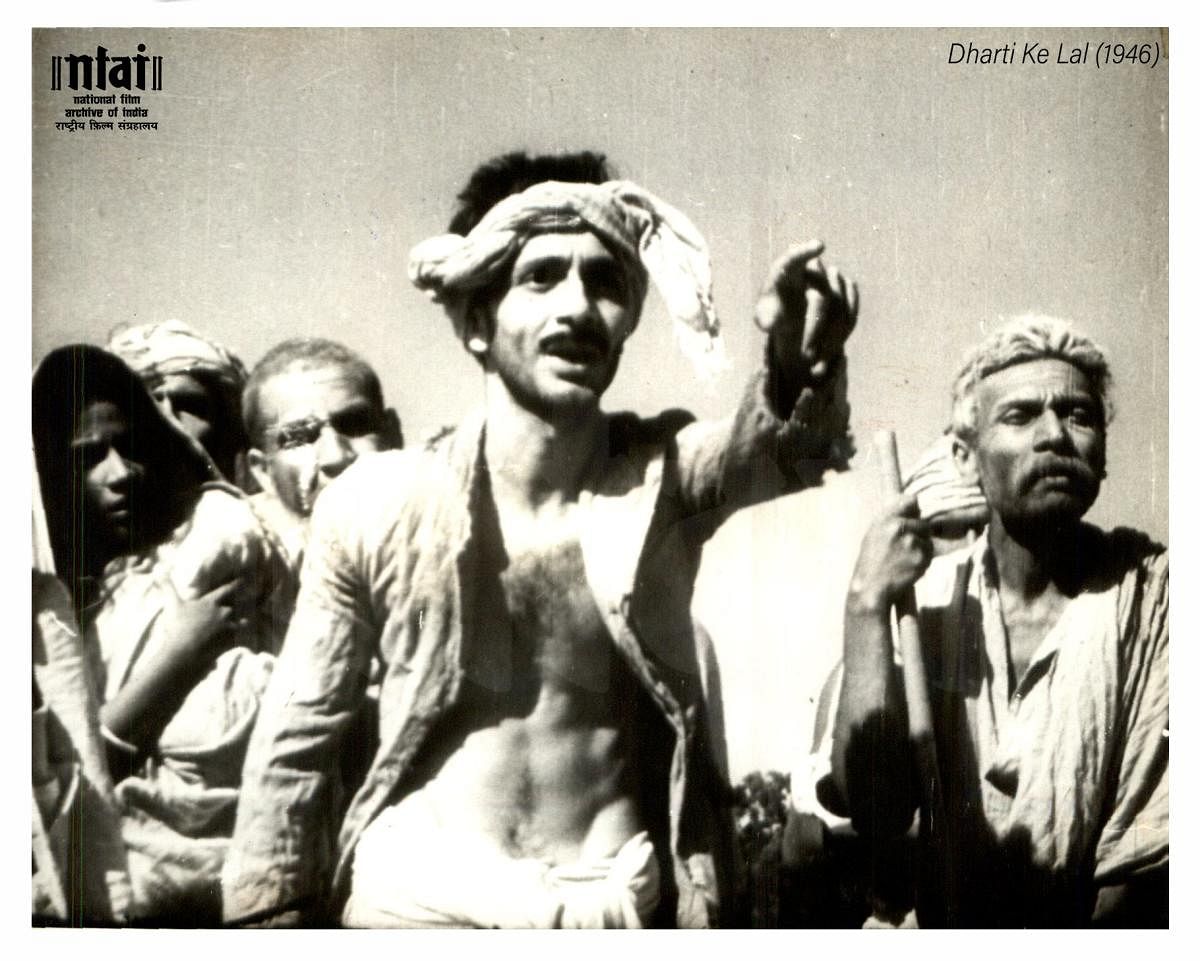
KA Abbas took it as a challenge to cast Sambhu and Tripti Mitra in his directorial debut ‘Dharti Ke Lal’ (1946). It was based on Bijon Bhattacharya’s famous novel Nabanna with the backdrop of the famine of 1942 in Bengal. The film also saw the introduction of Balraj Sahni and Rashid Khan from the Indian People’s Theatre Association. The music was by Pandit Ravi Shankar in 1946.
It was a real experiment for the sensitive writer-director to make Tripti (wife of Sambhu) to perform as his daughter-in-law (Sahni’s wife) in the film. Theatre and cinema are two different mediums. Could the Mitra duo do justice to movies as they did to stage? That was the big question those days.
Abbas never thrust his views on actors. He simply explained the finer details of this script to them. Sambhu and Tripti performed with sincerity. Concentrating on his character from rural Bengal, Sambhu delivered a variety of expressions. His Hindi had a Bengali accent but Abbas allowed it, going by his screenplay and dialogues.
In a soul-twisting scene, sitting on the pavements of Kolkata (then Calcutta) Sambhu begged and cried, “Phan Dao Go Ma’ (O Mother Please Give Us Phan).” It depicted the sorrows of the famine and pathos of hunger very well.
Abbas wanted a single modulation but Sambhu gave two. Since the dialogue had only four words, the director wanted only a single variation. In the second shot, Sambhu obliged his filmmaker perfectly. Sahni shook hands with the actor, confessing he could not have performed so well.
A decade later, Sambhu and Amar Moitra scripted and directed ‘Ek Din Ratre’ for RK Films at the request of Raj Kapoor. The film starred Chabi Biswas, Pahari Sanyal, Raj Kapoor, Nargis and Nemo (New Theatres). It had an offbeat subject about a village-based north Indian in quest of drinking water at a mansion in Kolkata.
Never did Raj Kapoor interfere in the direction of the maestros. Raj Kapoor was astonished viewing Sambhu’s directorial abilities. While shooting some scenes, Sambhu even scolded Raj Kapoor. In no other film did Raj Kapoor perform so effortlessly and excellently.
During the shooting of the Hindi version, ‘Jagte Raho’ (1956), Abbas penned the script. There was a strong difference of opinion between Sambhu and Raj Kapoor. Keeping their dignity intact, Sambhu and Amar quit directing the film. Abbas completed it. After winning the Jury Award at the Moscow Film Festival for ‘Jagte Raho’, Raj Kapoor came to visit Kolkata and embraced Sambhu with tears in his eyes. In the film, Sambhu and Amar were credited for direction in the titles.
Inspired by Charles Dickens’ ‘Oliver Twist’, Sambhu directed ‘Manik’ (1961) in Bengali starring Tripti and Arun Chattopadhyay. It was a bold experiment on celluloid in form, visuals and social content. After ‘Manik’, Sambhu quit cinema and concentrated entirely on theatre.
In his centenary, his contribution to cinema can be expressed in Sahni’s view, “Sambhu knew really how to harness theatrical manifestos while concentrating on cinematic language.”